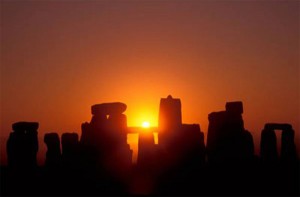Summer Solstice 2012
Summer officially kicks off today, with the summer solstice marking the longest day of the year on June 20 – at least in the Northern Hemisphere.
This year’s summer solstice takes place a day earlier than it’s been for the past three years, due to the fact that 2012 is a leap year—this February got an extra day, to keep our calendar year of 365 days in sync with the astronomical year, which is about 365.24 days.
In general, the exact timing of the summer solstice changes from year to year, “but there’s a bigger jump when you have a leap year” – explained Mark Hammergren, an astronomer at the Adler Planetarium in Chicago.
“But it’s still always going to be around June 20 or 21.”
Summer Solstice is First Day of Summer.
The summer solstice is officially the first day of summer in the Northern Hemisphere. On this day, the sun is at its highest point at noon. In a directly overhead position, since the earth’s North Pole is tilted at its maximum towards the sun. However, the sun’s overhead position varies for different latitudes, according to astronomers.
Interestingly, for the Southern Hemisphere the summer solstice day is actually the winter solstice (the shortest day of the year).
Summer Solstice Celebrations.
Solstices have been celebrated for ages, proof of which has been found in various ancient monuments and their structural designs. The most famous, perhaps, is Stonehenge, where thousands of observers still gather to see sunrise on a solstice.
Other ancient monuments built with solstice observing markers include the Kokino megalithic observatory, an archaeological site in the northeastern Republic of Macedonia, which has stone carved markers to track the movements of the sun and the moon.
In ancient times, summer and winter solstices were a way to identify change in growing and harvest seasons for following correct agricultural practices and therefore celebrations were a part of solstices.
Check out below pictures of summer solstice 2012 celebrations around the world…
Wednesday was the first day of summer, also known as the summer solstice. It’s the longest day of the year – and the shortest night.
The actual moment of the solstice occurred about 7:09 p.m. Wednesday, while the sun sat directly above the Pacific Ocean to the west of Hawaii.
As you may remember from your grade school science lessons, the seasons and the changing lengths of the day and night throughout the year are a result of the Earth’s axial tilt.
Try to visualize the Earth’s orbit around the sun as an elliptical path on an imaginary plane in space. As the Earth rests in that plane, its north and south poles—the ends of its axis—do not point straight “up” and “down.” The axis is instead about 23,4 degrees off the “vertical.”
As a result, the northern and southern hemisphere do not receive equal amounts of sunshine throughout the year. Right now, the northern hemisphere is “leaning” towards the sun. From now until the winter solstice on December 21, as the Earth continues around the sun, that tilt in the planet’s axis will be “leaning” our hemisphere less towards the sun each day.
If not for the tilt of the Earth’s axis, we would not have seasons. The day and night would be exactly the same length, year round. The northern and southern hemispheres would share the sun’s light equally. Right now, that only happens on the days of the spring and fall equinoxes (March 20 and September 22, this year).
Perhaps appropriately, as we bask in a whopping 15 hours and two minutes of daylight, Wednesday was expected to be the hottest day of 2012 in some areas of the U.S. Today could be hotter still.
If the heat gets to be a bit too much, consider the flip side of the solstice – For our friends in the southern hemisphere, it’s the winter solstice. In Punta Arenas, Chile, the high Wednesday was predicted in the mid- to upper-30s.
